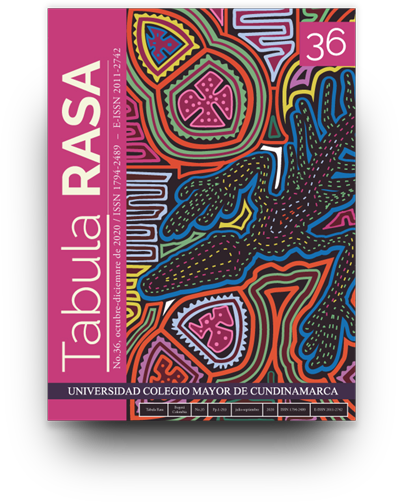Exchanges Between Humans and Trees in the Isthmo-Colombian Area: Ethnographic Contributions from Gunayala (Panama)
Intercambios entre humanos y árboles en el área istmo-colombiana. Aportaciones etnográficas desde Gunayala (Panamá)
Show authors biography
The relationships that are built between human and plant collectives have been understudied by ethnography in the Isthmo-Colombian area. In this article, drawing on an ethnographic experience of more than twenty years among the Gunas of Panama, we study the modes of relatedness between humans, trees and subjectivized beings stemmed from the latter —the so-called Nudsugana: Anthropomorphic and zoomorphic wood carvings that harbor life. From an ontological approach, this case study describes three elements: (a) the place occupied by trees in the creation of the Guna world; (b) their role in healing processes, and (c) the co-residence of the Nudsugana. As a conclusion, interdependency relations between humans and trees are analyzed, showing that their lives, although intertwined, hold to logics of subjection and are framed within a hierarchical symbiosis.
Article visits 141 | PDF visits 100
Downloads
- Albert, B. (2016). La forêt polyglotte = The polyglot forest. En: Le grand orchestre des animaux = The great animal orchestra, (pp. 91-99). Paris: Fondation Cartier pour l’Art Contemporain.
- Albert, B. (2019). Nous les arbres. Paris: Fondation Cartier.
- Albert, B. & Kopenawa, D. (2010). La chute du ciel. Paroles d’un chaman yanomami. Paris: Plon.
- Chapin, M. (1983). Curing among the San Blas Kuna of Panamá. Doctoral thesis. University of Arizona, Tucson.
- Chapin, M. (1989). Pab Igala. Historias de la tradición kuna. Quito: Abya-Yala.
- Descola, P. (2005). Par-delà nature et culture. Paris: Editions Gallimard.
- Descola, P. (2014). All too human (still) A comment on Eduardo Kohn’s How forests think. Hau: Journal of Ethnographic Theory, 4(2), 267-273. https://doi.org/10.14318/hau4.2.015
- Fortis, P. (2012). Kuna art and shamanism: an ethnographic approach. Austin: University of Texas Press.
- Gudeman, S. (2019). L’énergie vitale. Le courant des relations. Bérose Encyclopédie internationale des histoires de l’anthropologie, Paris. http://www.berose.fr/article1753.html?lang=fr
- Halbmayer, E. (2020). Introduction. Toward an anthropological understanding of the area between the Andes, Mesoamerica, and the Amazon. En E. Halbmayer. (Ed.). Amerindian Socio-Cosmologies between the Andes, Amazonia and Mesoamerica. Toward an Anthropological Understanding of the Isthmo–Colombian Area, (pp.3-34). London: Routledge.
- Holmer, N.M. & Wassén, S.H. (1963). Dos cantos shamanísticos de los indios cunas. Etnologiska studier, 27. Göteborg: Etnografiska Museet.
- Howe, J. (1986). The Kuna Gathering. Contemporary Village Politics in Panama. Austin: University of Texas Press.
- Kaviany, S. (2020). Plant ontologies among the Bribri of Talamanca, Costa Rica. En E. Halbmayer (Ed.). Amerindian Socio-Cosmologies between the Andes, Amazonia and Mesoamerica. Toward an Anthropological Understanding of the Isthmo–Colombian Area, (pp.279-302). London: Routledge.
- Kohn, E. (2013). How forests think: Toward an anthropology beyond the human. Berkeley: University of California Press.
- Mancuso, S. & Viola, A. (2018). L’Intelligence des plantes. Paris: Albin Michel.
- Martínez Mauri, M. (2020). Things, life, and humans in Guna Yala (Panama): talking about molagana and nudsugana inside and outside Guna society. En E. Halbmayer (Ed.). Amerindian Socio-Cosmologies between the Andes, Amazonia and Mesoamerica. Toward an Anthropological Understanding of the Isthmo–Colombian Area, (pp.257-278). London: Routledge.
- Niño Vargas, J.C. (2020). An Amerindian humanism: order and transformation in Chibchan universes. En E. Halbmayer (Ed.). Amerindian Socio-Cosmologies between the Andes, Amazonia and Mesoamerica. Toward an Anthropological Understanding of the Isthmo–Colombian Area (pp.37-60). London: Routledge.
- Nordenskiöld, E. & Pérez Kantule, R. (1938). An historical and ethnological survey of the cuna indians. Comparative Ethnological Studies, 10. Göteborg: Gotebörgs Museum.
- Perrin, M. (2007). Réveiller les figurines. Les nuchu des Indiens kuna. En M. Perrin, Voir les yeux fermés. Arts, chamanismes et thérapies, (pp.89-105). Paris: Le Seuil.
- Rival, L. (1998) The Social Life of Trees: Anthropological Perspectives on Tree Symbolism. New York: Berg Publishers.
- Shiratori, K. (2019). O olhar envenenado: a perspectiva das plantas e o xamanismo vegetal jamamadi (médio purus, am), Mana, 25(1), 159-188. http://dx.doi.org/10.1590/1678-49442019v25n1p159
- Wagua, A. (2000). En defensa de la vida y su armonía. Elementos de la religión kuna. Textos del Bab Igala. Congreso General Guna, Emisky/Pastoral Social-Cáritas, Panamá.
- Wohlleben, P. (2016). The hidden life of trees. Vancouver: Greystone Books.








